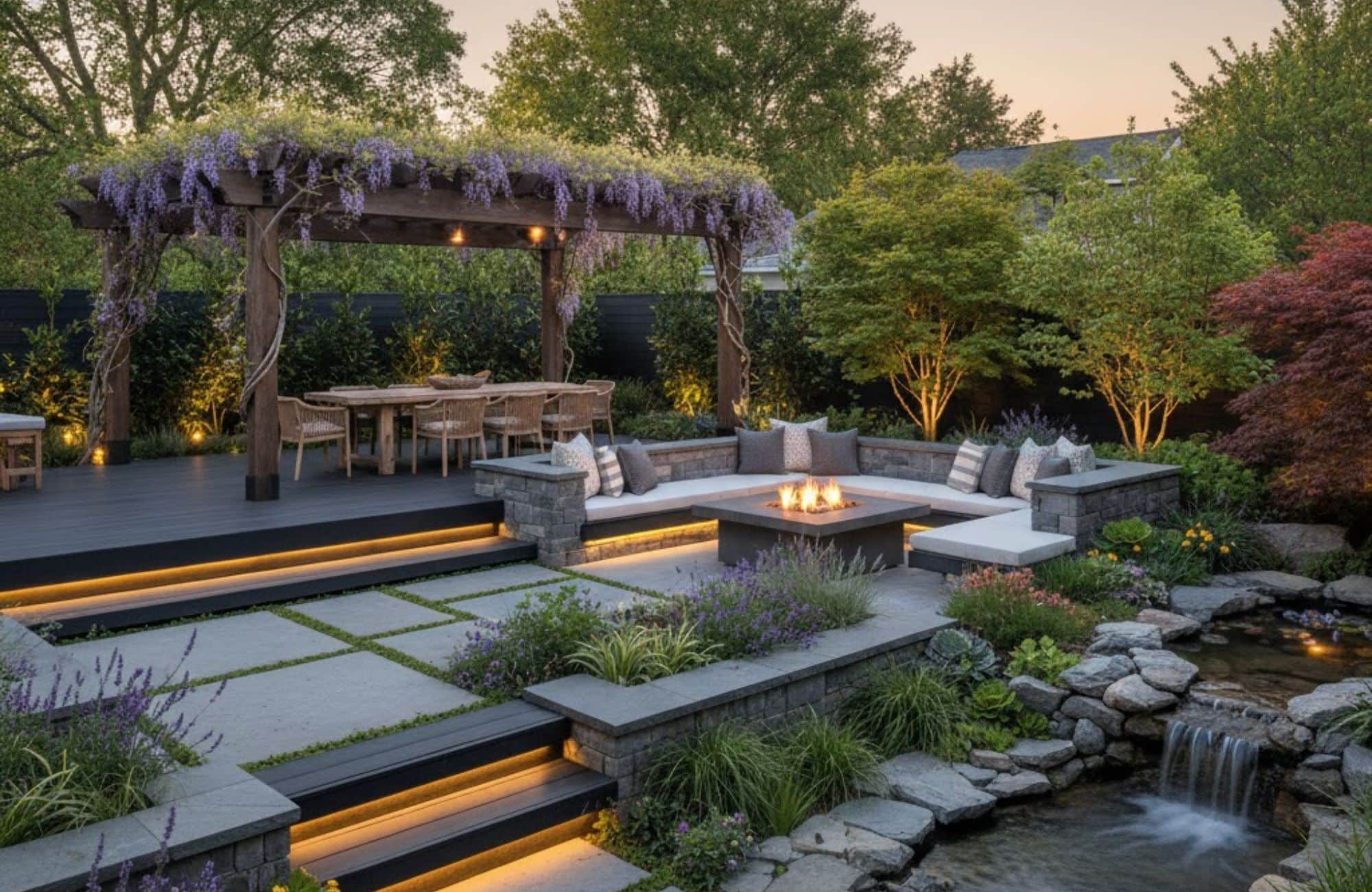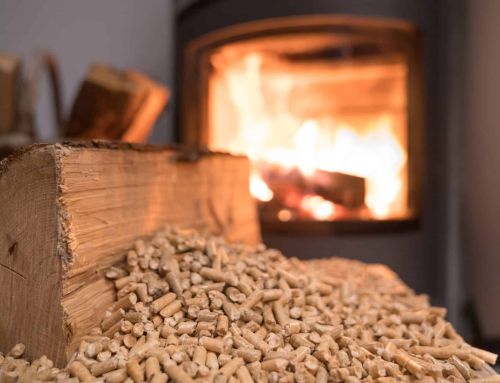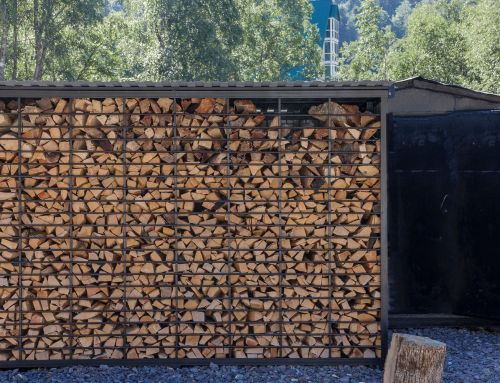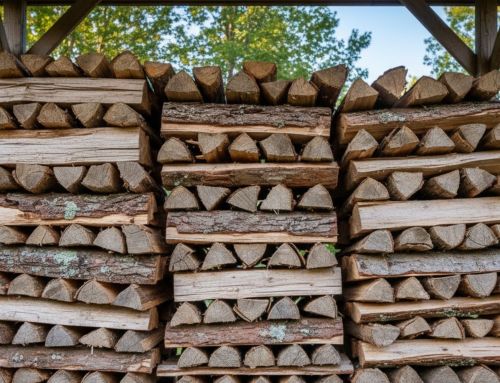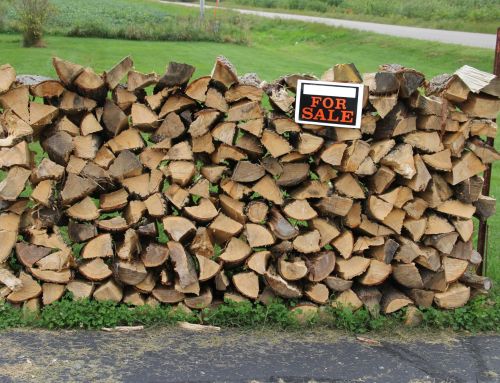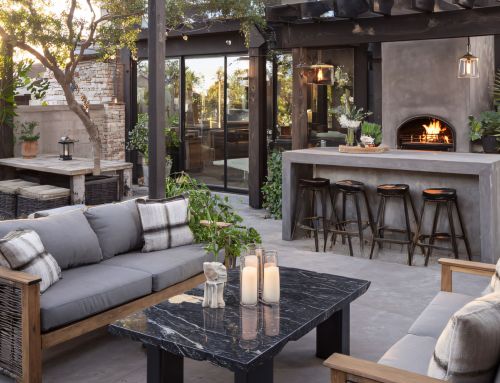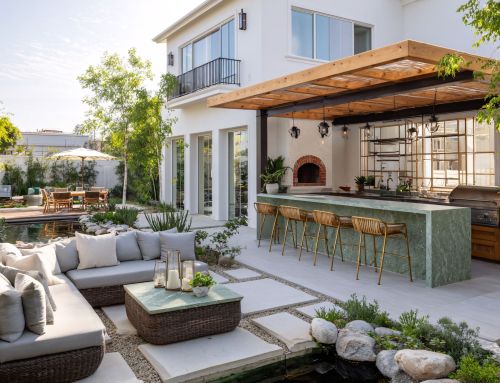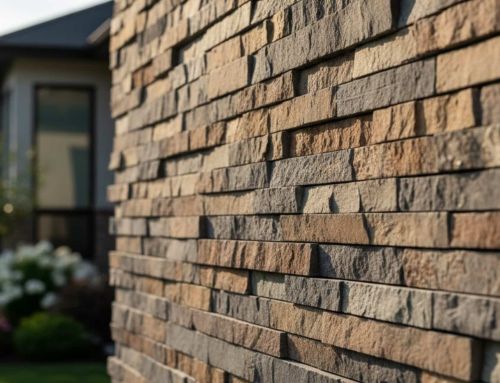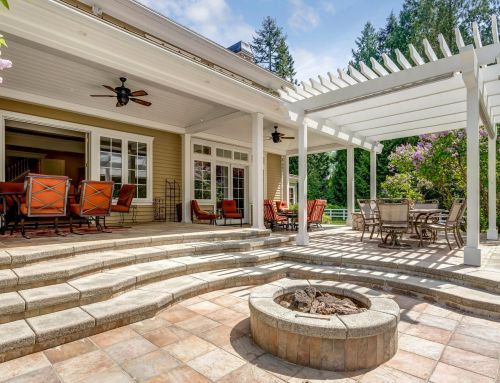Landscaping isn’t just about having a nice yard. It’s about creating an outdoor space that fits your lifestyle, complements your home’s architecture, and enhances your property’s overall value. Thoughtful residential landscaping design features can transform a simple backyard into an inviting retreat or an elegant outdoor room.
At Old Station Outdoor & Landscape Supply, we help homeowners and contractors across Massachusetts, Rhode Island, and Connecticut bring these designs to life. Whether you’re planning a patio, outdoor kitchen, or complete landscape overhaul, the right combination of hardscape and softscape elements makes all the difference.
Why Residential Landscaping Design Matters
A successful landscape design blends beauty, functionality, and sustainability. It goes beyond curb appeal by creating outdoor spaces that remain inviting in every season. When designed well, your residential landscape enhances aesthetic appeal and defines functional value for year-round enjoyment. It also supports local ecosystems through native plants and thoughtful landscape elements that add texture and depth. Every feature, from patios to plant beds, should complement your home’s architectural style while improving comfort and livability.
Thoughtful landscaping requires building materials like granite, bluestone, or porcelain pavers that withstand freeze-thaw cycles, heavy rain, and shifting temperatures. Proper grading, soil conditions, and drainage systems also ensure your design lasts. By selecting region-appropriate plant types, such as hardy shrubs and seasonal perennials, homeowners maintain visual interest and structural balance. This thoughtful approach ensures long-term functionality and lasting beauty.
Key Elements of Residential Landscape Design
A professional landscape plan brings together both hardscape and softscape features to create balance and flow. The best outdoor designs use structure and natural elements to complement each other.
Hardscape Features That Define Your Outdoor Space
Hardscape is the backbone of any outdoor design. They form the structure, defining paths, gathering areas, and transitions between spaces.
Some of the most important hardscape elements include:
- Patios and walkways: Crafted from granite, bluestone, or porcelain pavers for durability and style.
- Retaining walls: Perfect for adding dimension or managing uneven grades.
- Steps, borders, and driveways: Functional features that also elevate your home’s curb appeal.
- Outdoor kitchens and fire pits: Extending your living space beyond the walls of your home.
Custom stone fabrication allows homeowners to choose materials that match their design goals and complement their landscape elements. Whether it’s a polished granite countertop for an outdoor kitchen or textured bluestone steps for a natural look, material choice matters. Selecting the right finish and material ensures lasting durability and strong aesthetic appeal in any outdoor design. Thoughtful material choice also helps create a cohesive outdoor space that balances beauty, function, and long-term performance.
Softscape Features That Add Life and Color
Softscapes bring warmth and life to the structure you’ve created. They include all living components, plants, trees, shrubs, ground covers, and lawns.
When planning your softscape, consider:
- Color and texture variety: Combine fine and coarse textures for contrast.
- Plant selection: Choose native plants suited to local soil and climate for easier maintenance.
- Balance: Use small trees or shrubs to frame structures while keeping human scale in mind.
- Seasonal interest: Design with plants that thrive in more than one season.
A landscape designer often starts with a base plan or rough sketch to visualize how existing vegetation, utility lines, and traffic patterns affect the layout.
Popular Residential Landscaping Design Features Homeowners Love
A beautiful landscape combines personality with practicality. Here are some of the most sought-after design features homeowners are choosing across New England.
Outdoor Kitchens & Fire Features
Outdoor kitchens have become a key feature in modern landscape design, extending living and dining areas for easy entertaining. Granite and stone veneer combine durability with elegance, creating stylish, weather-resistant surfaces. A custom-fabricated countertop enhances functionality and adds refined architectural style. Meanwhile, fire pits and fireplaces built from natural stone or precast blocks provide warmth, ambiance, and lasting appeal to outdoor spaces.
Water Features for Relaxation
Water features bring timeless charm to residential landscape design by softening hard edges and adding gentle movement. Homeowners often choose fountains or ponds as central focal points, while small cascades introduce the calming sound of running water. Reflecting pools create symmetry and elegance in formal layouts. These landscape elements enhance visual appeal, attract local wildlife, and support greater biodiversity within your outdoor space.
Lighting & Ambiance
Good lighting turns an ordinary landscape into something extraordinary. Pathway and accent lighting can highlight key features, ensure safety, and create depth after dark. Warm-toned lights on trees, retaining walls, or decorative elements enhance texture and extend the enjoyment of your outdoor room well into the evening.
Retaining Walls & Multi-Level Design
Retaining walls serve both practical and decorative purposes in residential landscape design. They manage soil elevation, define property boundaries, and form terraced garden beds that enhance visual appeal. Using retaining wall blocks, natural stone, or stone veneer ensures stability and aesthetic balance. When constructed properly, these landscape elements improve drainage, prevent erosion, and protect the local environment for long-term durability.
How to Plan a Residential Landscape Design That Lasts
A thoughtful plan is the foundation of every successful garden design. Here’s how to start the process strategically.
- Assess Your Site – Evaluate soil type, shade patterns, drainage, and existing features like trees or power lines. Create a site inventory noting property boundaries, utility lines, and any existing structures.
- Define Functional Zones – Separate entertainment, relaxation, and practical areas like vegetable gardens or play spaces.
- Develop a Base Plan – Use tracing paper over a printed property map to experiment with geometric shapes, traffic patterns, and human scale.
- Select Materials & Plants – Choose building materials that complement your home’s architectural style and plant materials suitable for the local climate.
- Visualize the Final Design – A professional 3D landscape design allows homeowners to preview layouts before construction begins. This step helps refine landscape elements, ensure proper scale, and reduce costly mistakes by revealing design or spacing issues early.
- Partner with Professionals – Work with a certified landscape designer or one of Old Station Outdoor & Landscape Supply’s trusted contractors to bring your vision to life.
Choosing the Right Materials for Your Landscape Project
The materials you choose affect longevity, appearance, and maintenance requirements. Here’s how some of the most popular options compare:
| Material | Best For | Benefits | Maintenance Level |
|---|---|---|---|
| Granite | Patios, steps, fire pits | Extremely durable; timeless; withstands frost | Low |
| Bluestone | Walkways, patios | Natural color variations; elegant texture | Medium |
| Porcelain Pavers | Pool decks, terraces | Modern look; slip-resistant; easy to clean | Very Low |
| Stone Veneer | Walls, outdoor kitchens | Lightweight; flexible design; natural look | Low |
When sourcing construction materials, always consider your local environment and soil conditions. Old Station Outdoor & Landscape Supply’s knowledgeable staff can help you select materials that balance aesthetics, cost, and durability while coordinating reliable delivery to your site.
Expert Tips for Designing with Hardscape and Softscape Balance
Creating a cohesive landscape means balancing the structure of hardscape with the softness of plants. Start by visualizing the space as layers, from the ground plane to the vertical elements.
Here are a few practical design principles:
- Symmetrical balance: Best for formal designs with straight lines and geometric layouts.
- Asymmetrical balance: Works well in natural settings with curved pathways or irregular shapes.
- Strategic placement: Use large plants or a specimen tree as a focal point, supported by smaller shrubs planted nearby for scale.
- Texture and color: Combine coarse textures (stone) with softer plant foliage to create depth.
This harmony between structure and life is what defines a truly functional landscape.
Conclusion
Every great landscape project begins with a clear plan and quality materials. Combining design vision with durable products ensures lasting aesthetic appeal and functionality. With thoughtful planning and balanced landscape elements, homeowners can create inviting outdoor spaces that enhance comfort and property value year-round.
At Old Station Outdoor & Landscape Supply, we provide premium outdoor living products, expert support, and reliable local delivery for homeowners and contractors. Our team helps you choose the right materials and design solutions for any project. Contact us today to start building your dream outdoor space.
FAQs
What are the 5 basic elements of landscape design?
The five basic elements of landscape design are color, line, form, texture, and scale. These landscape elements work together to create balance, harmony, and visual interest in an outdoor space. When used thoughtfully, they enhance both aesthetic appeal and functionality in residential landscapes.
What are the features of the landscape?
The features of the landscape include both hardscape elements, such as patios, walls, and walkways, and softscape features like plants, lawns, and trees. Additional features may include water features, lighting, and decorative structures that add visual interest. Together, these components shape the outdoor environment and define how the space is used.
What are the 7 principles of landscape design with examples?
The seven principles of landscape design are unity, balance, proportion, rhythm, emphasis, simplicity, and transition. For example, symmetry in plant placement creates balance, while a focal point like a specimen tree adds emphasis. Applying these design principles ensures that each feature complements the others and creates a cohesive outdoor space.
What are the three major principles of landscape design?
The three major principles of landscape design are proportion, balance, and unity. Proportion ensures that all landscape elements fit well together in scale, while balance creates visual stability. Unity ties the design together by maintaining consistency in materials, colors, and overall style throughout the residential landscape.

